当前位置:网站首页>[C language foundation] 04 judgment and circulation
[C language foundation] 04 judgment and circulation
2022-07-06 10:44:00 【One reed to sail FP】
One 、 Judge
1、if sentence
// form 1: Single execution statement
if ( Judging expressions ) //")" No semicolon after
Execute statement
// form 2: Multiple execution statements ( Compound statement )
if( Judging expressions ) {
Execute statement 1
Execute statement 2
...
} //"}" There must be no semicolon after
- Calculate the relationship between two values , Called relational operators . The following table shows the common relational operators
2、 Relational operator
| Operator | significance |
|---|---|
| == | equal |
| != | It's not equal |
| > | Greater than |
| >= | Greater than or equal to |
| < | Less than |
| <= | Less than or equal to |
- There are only two results of relational operation : Integers 1( The result is true ) And integer 0( The result is false ).
- All relational operators have a lower priority than arithmetic operators , But higher than the assignment operator . To determine whether they are equal == and != The priority of is lower than others , Continuous relational operations operate from left to right .
3、if - else sentence
// form 1: Single execution statement
if ( Judging expressions ) Execute statement else Execute statement
// form 2: Multiple execution statements ( Compound statement )
if ( Judging expressions ) {
Execute statement 1
Execute statement 2
...
}
else {
Execute statement 1
Execute statement 2
...
}
4、if Nesting of statements
if ( Judging expressions 1) {
Execute statement
} if ( Judging expressions 2) {
Execute statement
}
else {
Execute statement
}
elseAnd the nearest oneifmatching ;- Indent format cannot be in time
elseThe match of ;
Suggest :
- stay
ifandelseAlways add{}, Even if there is only one execution statement . - A match
ifandelsePosition alignment .
5、if Cascade of statements
if ( Judging expressions 1)
Execute statement
else if ( Judging expressions 2)
Execute statement
...
else if ( Judging expressions )
Execute statement
else
Execute statement
6、if Common errors in statements
1、 When executing a compound statement , Forget the parentheses
{}.
- countermeasures : Always in
ifandelseI'll put curly braces after it .
2、
ifAdd a semicolon after . namely :if ( Judging expressions ); sentence // The upper and lower codes are equivalent if ( Judging expressions ) ; sentence
3、 Misuse
==and=
ifOnly required()The value in is zero ( To judge as false ) Or nonzero ( Judge as true )
4、 Code style.
- stay
ifandelseThen you must add braces{}Form statement blocks ;- In braces
{}The statement inside is indented by tab The location of .
7、 Multiple branches switch-case
Format :
switch ( Control expression ) {
// Control expressions can only be integer values
case Constant expression : sentence // Here " Constant expression " It can be a constant , It can also be a constant calculation expression , for example "2" or "1+1" All possible
...
case Constant expression : sentence
default : sentence
}
give an example :
switch(type) {
case 1:
printf("type = 1");
break; // Jump out of judgment
case 2: //"type" Meet the corresponding value , Jump directly to the corresponding case Statement place , Instead of judging from the top to the bottom from the beginning .
printf("type = 2");
break; // Jump out of judgment
case 3:
printf("type = 3");
break; // Jump out of judgment
default: // Other situations
printf("type= Other values ");
}
Particular attention : case It only indicates the starting position of the program after judgment , It's just “ entrance ”, Instead of dividing the program into segments . If there is no break Then we will not continue to judge , No matter later case What is the value of the , The program is still executed sequentially . For example, the following procedure :
// This procedure ,type=1 and type=2 The output is the same , because case 1: There is no break. if case 2 There is no break, Will continue to execute case 3 The following statement . Until I met break or "}" end .
switch(type) {
case 1:
case 2:
sentence
break;
case 3:
sentence
break;
default:
sentence
}
Two 、 loop
1、while loop
while Sentence format :
while( Loop judgment expression ) {
Loop statement
}
while Cycle flow chart :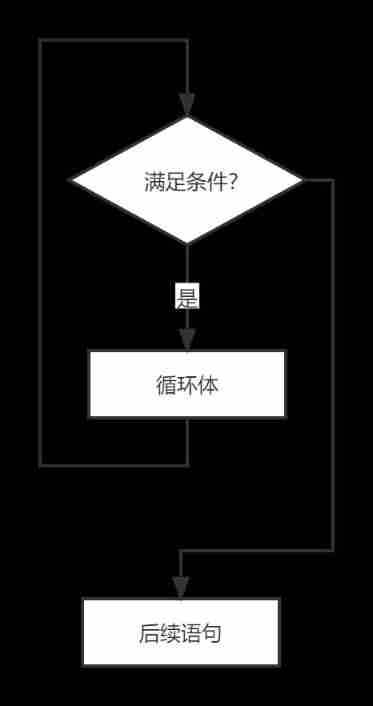
- The circulatory body should have the opportunity to change the conditions of circulatory judgment , Otherwise, it will become an endless circle .
whileCycle means , Keep repeating the sentences inside the loop .whileDetermine whether to continue the loop before the loop is executed , So it's possible that the loop hasn't been executed .( Anddo-whileDifferent )- The condition is the condition for the cycle to continue .
2、do-while loop
do-while Circular format :
do {
Loop statement
} while( Return the loop condition ); // There must be a semicolon here ( You can think of braces {} Bring your own semicolon )
do-while Cycle flow chart :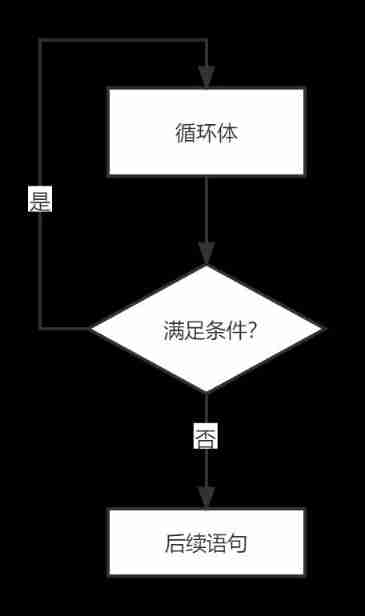
do-whileThe cycle will enter the cycle at least once ( AndwhileDifferent )
Tips:
- Note the start and end values of the loop ;
- To simulate running a large number of cycles , It can simulate fewer cycles , And then infer ;
- Remember to save the original value before calculating , It may be useful later .
- Decomposition of integers ( How to get the number on each bit of an integer ):
- Integers %10, Get single digits ;
- Integers /10, Get ten digits ;
- Yes 2 Result %10, Get hundreds of digits
- ... And so on .
- ** Find the inverse ordinal number
- :**
int x, digit; //digit Is the last digit scanf("%d",&x); // Read the original number do { digit = x%10; // Get the last digit printf("%d",digit); // Output the last digit //ret = ret*10 + digit; x /= 10; // Remove the last digit from the original number }while(x!=0);
3、for loop
Format :
for ( expression 1; expression 2; expression 3) {
sentence
}
// expression 1—— initial ( turn ) Conditions
// expression 2—— The cycle continues ( Repeat the loop body ) Conditions
// expression 3—— The last step before the end of each cycle
above for sentence Equivalent to The following statement :
expression 1;
while( expression 2){
sentence
expression 3;
}
forCyclic 3 Expressions can omit one of them .
Tips:3 Seed circulation
- If there's a fixed number of times , use
forloop ;- If necessary 1 Time , use
do-whileloop ;- In other cases
whileloop .
3、 ... and 、 Cycle control
1、 Cycle control
break: Out of the loop
( Jump out of this cycle completely , Including the current round and the number of subsequent rounds )continue: End the cycle ahead of time
( Skip the remaining statements , Go straight to the next round ).
Program examples :
// Program for judging prime numbers
int x,i;
scanf("%d", &x);
int isPrime = 1;
for(i=2;i<x;i++){
if(x%i == 0){
isPrime = 0;
break; // As long as existence can be 1 Divide by numbers other than itself , End cycle
}
}
if(isPrime == 1) printf(" Prime number ");
else printf(" Not primes ");
2、 Multiple cycles
(1) A nested loop
- In each cycle , The variables that control the loop should be different , Otherwise, an error will be reported .
Program examples :
// Program for judging prime numbers
int x;
for(x=1;x<=100;x++){
int i;
int isPrime = 1;
for(i=2;i<x;i++){
if(x%i == 0){
isPrime = 0;
break; // As long as existence can be 1 Divide by numbers other than itself , End cycle
}
}
if(isPrime == 1) printf("%d ",x);
}
(2) Jump out of nested loop
breakandcontinueCan only operate on the layer where it is located , When loop nesting exists , The cycle of other layers where it is not located still needs to continue , Will not be skipped .- The most appropriate way to jump out of multiple nesting is
gotosentence . In other cases, try not to use , Otherwise, the structure of the program will be destroyed , It leads to poor readability .
Method 1 : The relay break
Program examples :
// use 1 horn 、2 Angular sum 5 Horn money , Find a solution
int x;
int one; two; five;
int exit = 0; // Judge break Whether to relay variables
scanf("%d", &x);
for(one = 1;one<=x*10;one++){
for(two = 1;two<=x*10/2;two++){
for(five = 1;five<=x*10/5;five++){
printf("%d Yuan is equal to %d individual 1 horn +%d individual 2 horn +%d individual 5 horn ",x,one,two,five);
exit = 1; // If found, change the relay variable
break;
}
if(exit) break; // Judge whether to relay
}
if(exit) break; // Judge whether to relay
}
Method 2 :goto sentence
The basic structure :
【 Label statement 】
identifier : sentence// Pay attention to the colons
【goto sentence 】goto identifier ;
Program examples :
for(one = 1;one<=x*10;one++){
for(two = 1;two<=x*10/2;two++){
for(five = 1;five<=x*10/5;five++){
printf("%d Yuan is equal to %d individual 1 horn +%d individual 2 horn +%d individual 5 horn ",x,one,two,five);
goto out; //out For the label that jumps out
}
}
}
out: // Jump out of position , Pay attention to the end of the colon
3、 Recycling
(1) front n Sum of terms
Program examples :
// seek f(n) = 1-1/2+1/3-1/4+...+1/n
int i,n;
int sign = 1; // Replace the sign
double sum=0.;
scanf("%d",&n);
for(i=1;i<=n;i++){
sum += sign*1./i;
sign = -sign; // Alternate polarity
}
printf("f(%d) = %f\n",n,sum);
(2) Integer decomposition
// Integer decomposition : For example, the input 10340, Output 1 0 3 4 0
int x;
scanf("%d",&x);
int mask = 1; //mask Storage 10 Multiple
int t = x;
// For different digits x, Find the same number of digits mask. For example, the input 100342,mask=100000
while(t>9){
t /= 10;
mask *= 10;
}
printf("x=%d, mask = %d", x, mask);
do{
int d = x / mask;
printf("%d",d);
if(mask>9){
//mask The judgment condition of this statement , Instead of x
printf(" ");
}
x %= mask;
mask /= 10;
}while(mask>0); //mask The judgment condition of this cycle , Instead of x
(3) Find the greatest common divisor
- Enumeration :
int a,b,i;
for(i=1; i<a&&i<b; i++){
if(a%i==0 && b%i==0) ret = i;
}
printf("%d and %d The greatest common divisor of is %d", a,b,ret);
2. division
Ideas :
- If b be equal to 0, End of calculation ,a Is the greatest common divisor ;
- otherwise , Calculation a And b The remainder of , Give Way a be equal to b, and b Equal to the remainder ;
- Back to step one .
Demo code :
// Find the greatest common divisor by division
int a,b,ret;
scanf("%d %d",&a,&b);
while(b!=0){
ret = a%b;
a = b;
b = ret;
}
printf(" The greatest common divisor is %d",a);
边栏推荐
- Time complexity (see which sentence is executed the most times)
- Breadth first search rotten orange
- Security design verification of API interface: ticket, signature, timestamp
- Not registered via @enableconfigurationproperties, marked (@configurationproperties use)
- 用于实时端到端文本识别的自适应Bezier曲线网络
- [programmers' English growth path] English learning serial one (verb general tense)
- MySQL35-主从复制
- Mysql26 use of performance analysis tools
- The underlying logical architecture of MySQL
- First blog
猜你喜欢
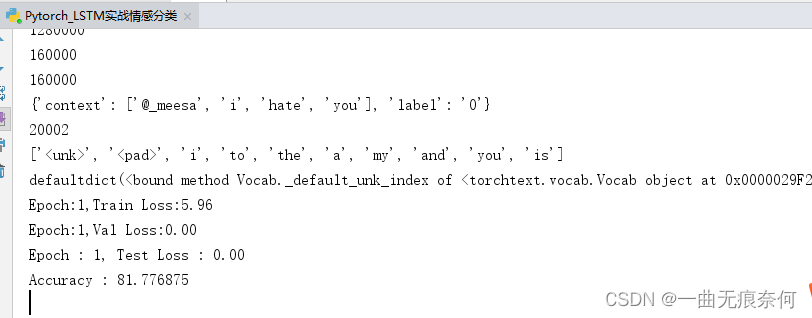
Emotional classification of 1.6 million comments on LSTM based on pytoch
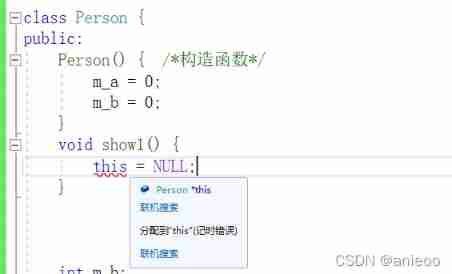
Const decorated member function problem
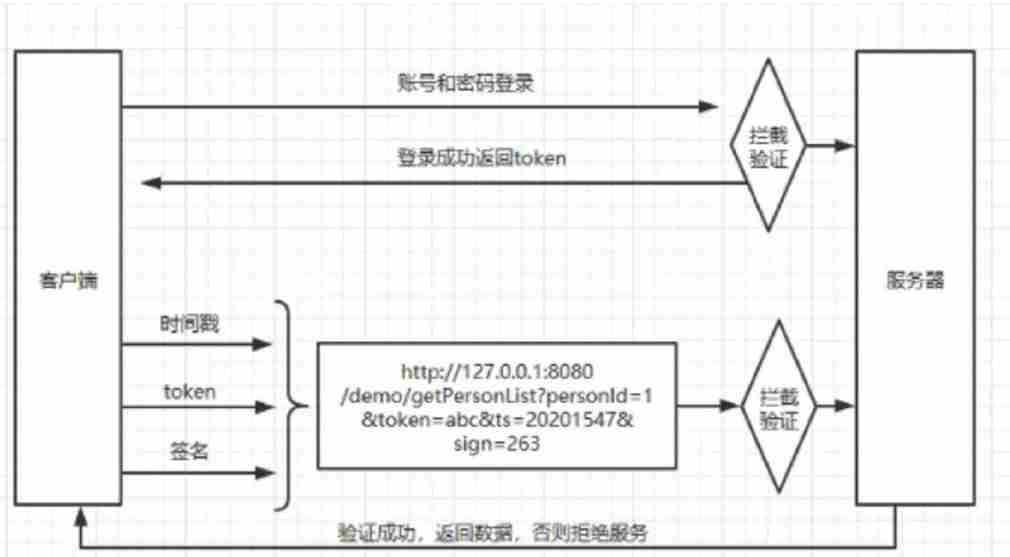
Security design verification of API interface: ticket, signature, timestamp
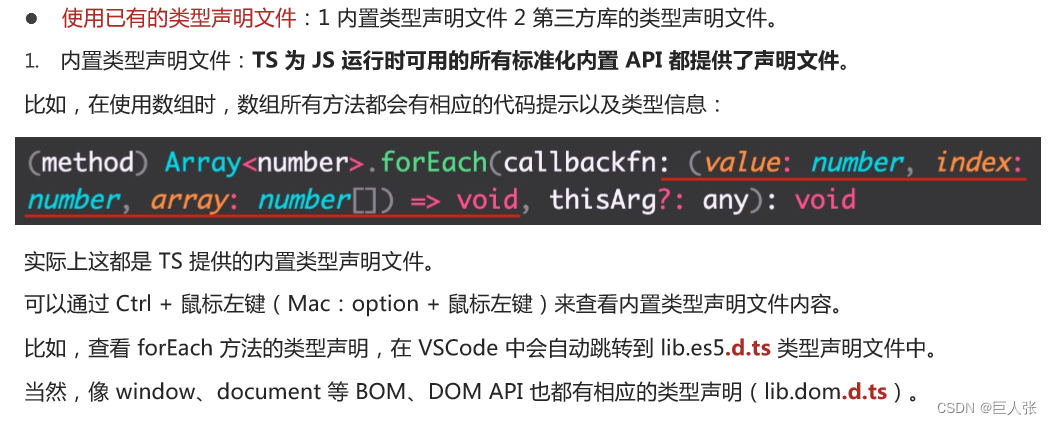
Introduction tutorial of typescript (dark horse programmer of station B)

Mysql32 lock
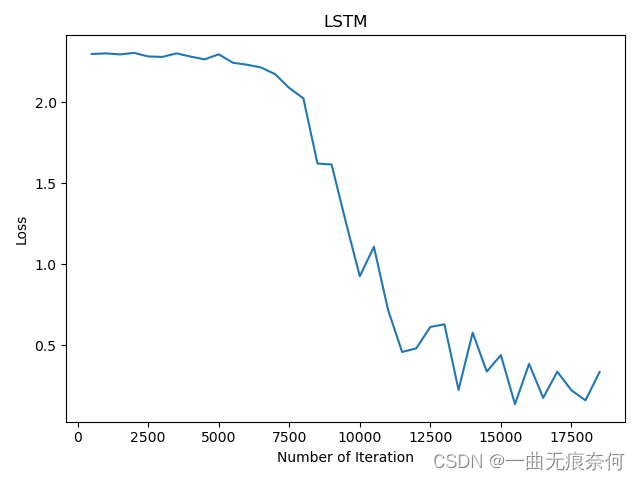
Pytoch LSTM implementation process (visual version)

MySQL21-用户与权限管理
![[C language] deeply analyze the underlying principle of data storage](/img/d6/1c0cd38c75da0d0cc1df7f36938cfb.png)
[C language] deeply analyze the underlying principle of data storage
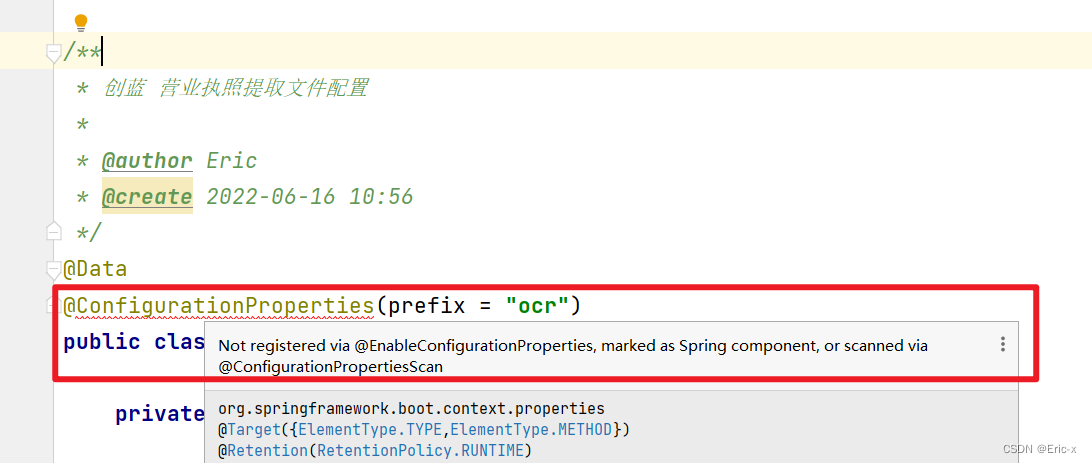
Not registered via @enableconfigurationproperties, marked (@configurationproperties use)

Security design verification of API interface: ticket, signature, timestamp
随机推荐
评估方法的优缺点
Water and rain condition monitoring reservoir water and rain condition online monitoring
Moteur de stockage mysql23
MySQL底层的逻辑架构
Valentine's Day is coming, are you still worried about eating dog food? Teach you to make a confession wall hand in hand. Express your love to the person you want
MySQL23-存儲引擎
Not registered via @EnableConfigurationProperties, marked(@ConfigurationProperties的使用)
Mysql23 storage engine
C language string function summary
Complete web login process through filter
The underlying logical architecture of MySQL
[paper reading notes] - cryptographic analysis of short RSA secret exponents
How to change php INI file supports PDO abstraction layer
Windchill configure remote Oracle database connection
CSDN question and answer tag skill tree (I) -- Construction of basic framework
Emotional classification of 1.6 million comments on LSTM based on pytoch
Mysql24 index data structure
MySQL29-数据库其它调优策略
ZABBIX introduction and installation
Mysql36 database backup and recovery